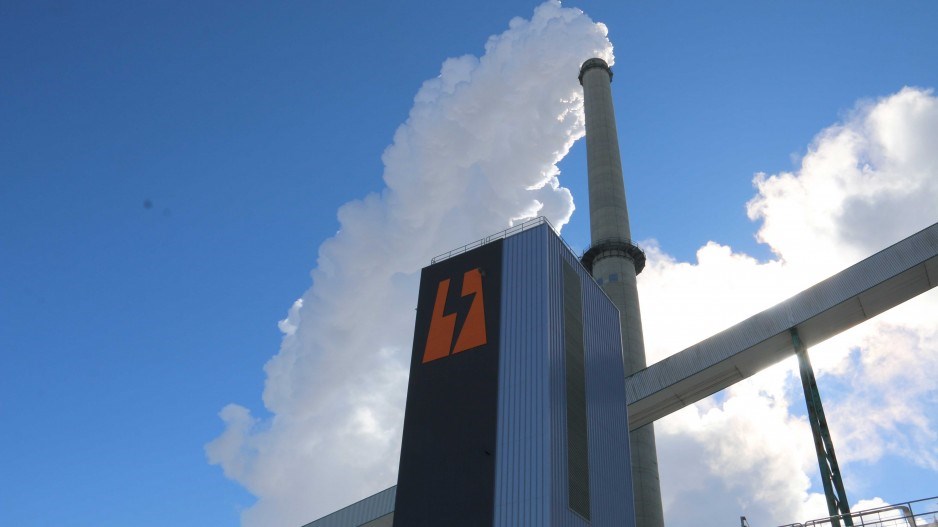Unlike B.C. or Quebec, Saskatchewan doesn’t have the gushing rivers needed to generate a significant amount of hydroelectric power.
It has world-class uranium deposits and mines but, for political reasons, has never tapped that resource to develop nuclear power.
Saskatchewan also has thermal coal, however, so until the entire landscape becomes dotted with wind turbines and solar panels, Saskatchewan is stuck with coal for generating half of its power.
But burning coal to produce electricity poses a serious challenge for any jurisdiction in living up to greenhouse gas reduction obligations and avoiding pariah status in a world that is increasingly anti-coal.
That explains why SaskPower spent close to $1 billion on the Boundary Dam project, which has become a showpiece for coal-fired power carbon capture and sequestration.
“The Boundary Dam project is quoted around the world now at all coal conferences as the example that the technology can be applied to coal-fired power generation,” said Keith Burnard, head of the energy supply technology unit for the International Energy Agency.
Burnard was one of the speakers talking about coal technology and innovation at last week’s Coal Association of Canada conference in Vancouver.
The Boundary Dam carbon capture plant was commissioned one year ago and has drawn attention from around the world, as other nations that rely on coal struggle to continue meeting their energy needs while grappling with climate change.
The plant removes 90% of the carbon dioxide emissions generated by a coal-fired thermal power plant. It also removes other pollutants: particulate matter and sulphur and nitrogen oxides.
It captures one million tonnes of CO2 per year, most of which is sold for use in enhanced oil recovery in Saskatchewan. What is not sold is stored underground in a 3.4-kilometre-deep saline aquifer.
“Coal’s not dead,” said Mike Monea, SaskPower’s president of carbon capture and storage initiatives. “People are saying, ‘Let’s get away from coal and go to natural gas.’
“What we’ve found is that you can clean up a fossil fuel like coal to very low conditions and it makes economic sense, so there’s a future for coal.”
Currently, enhanced oil recovery is the only significant market for captured CO2, although work is being done to use it to develop various chemicals and fuels, including fertilizers.
Some might question whether there is a net value to the environment if the bulk of the CO2 captured from a coal-fired power plant is used to get more oil out the ground. As Monea points out, however, most of the CO2 injected underground in enhanced oil recovery stays underground.
Even so, carbon sequestration is seen as a stop-gap measure, at best, until other economic uses for captured carbon are developed or until burning coal for power is phased out altogether.
The latter is not likely to happen any time soon, Burnard said. The reality is that coal remains one of the world’s cheapest forms of power generation and, unlike other resources, coal deposits are widespread around the world. Globally, 40% of all electricity comes from coal.
“It’s abundant, it’s relatively cheap fuel and it’s available in many more countries than other fossil fuels, so it’s quite widespread in its reserves around the world,” Burnard said.
But coal has the highest carbon content of any fossil fuel, creates other harmful pollutants when burned and consumes large volumes of water, and the mining of coal releases methane, which is the worst of the greenhouse gases, since its heat-insulating properties are multiples higher than those of C02.
In other words, dealing with carbon emissions isn’t the only imperative for technology that addresses coal’s multiple negative environmental impacts.
One Chinese company, FGX SepTech, has developed a technology that addresses the problem of water consumption.
Like most other things that are mined, coal doesn’t always come up in a pure form. It is usually mixed with rock and other materials.
Since coal is lighter than rock and will float, the most common way of separating out coal is through washing, which requires large volumes of water, creating an environmental liability in the form of toxic tailings water.
FGX SepTech’s technology also takes advantage of the fact that coal is lighter than waste rock, but, instead of water, it uses vibrations, gravity and air to sift coal from heavier materials in the ore.
“Our technology completely avoids water,” said B.K. Parekh, chief engineer for FGX SepTech.
“This is very economical technology. The cost of processing one tonne of coal is close to $1.50 a tonne. If you look at the wet process, the wet process costs you about $7 or $8 per tonne.”




